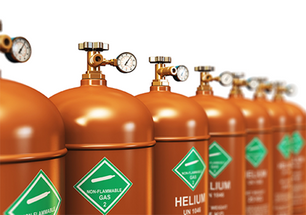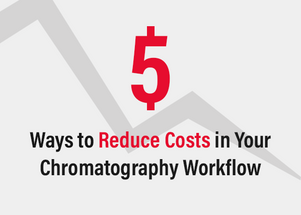Posted by Chrom Tech on 22nd Oct 2025
Blog
Posted by Chrom Tech on 22nd Oct 2025
Essential HPLC Components Explained
Posted by Chrom Tech on 22nd Oct 2025
Exploring HPLC Separation Techniques
Posted by Chrom Tech on 22nd Oct 2025
Understanding HPLC: What Does HPLC Stand For and Why it Matters
Posted by Chrom Tech on 22nd Oct 2025
Mastering HPLC Liquid Chromatography Techniques
Posted by Chrom Tech on 22nd Oct 2025
Ultimate Guide to Gas Chromatography Columns
Posted by Chrom Tech on 22nd Oct 2025
Understanding HPLC Instrumentation: Principles & Uses
Posted by Chrom Tech on 22nd Oct 2025
Comprehensive Guide to HPLC Vials & Caps
Posted by Chrom Tech on 22nd Oct 2025
Essential Guide to Gas Chromatography Capillary Columns
Posted by Chrom Tech on 22nd Oct 2025
Explore Top HPLC Glass Vials for Accurate Results
Posted by Chrom Tech on 22nd Oct 2025
Unveiling the Power of Chiral GC Columns
Posted by Chrom Tech on 20th Oct 2025
HPLC Autosamplers: A Complete Guide
Posted by Chrom Tech on 20th Oct 2025
Agilent HPLC: Essential Accessories Guide
Posted by Chrom Tech on 20th Oct 2025
Understanding HPLC Flow Meter Technology
Posted by Chrom Tech on 20th Oct 2025
Essential Guide to HPLC Lab Equipment
Posted by Chrom Tech on 20th Oct 2025
Top Tips for Finding the Best GC Column Price
Posted by Chrom Tech on 20th Oct 2025
Unveiling the Power of Non-Polar GC Columns
Posted by Chrom Tech on 20th Oct 2025
Thermo GC Columns: Your Comprehensive Guide
Posted by Chrom Tech on 20th Oct 2025
Understanding HPLC Chromatography: A Comprehensive Guide
Posted by Chrom Tech on 20th Oct 2025
Understanding Affinity Chromatography
Posted by Chrom Tech on 20th Oct 2025
Reverse Phase Chromatography Techniques
Posted by Chrom Tech on 20th Oct 2025
Tackling Common Challenges in Chromatography
Posted by Chrom Tech on 20th Oct 2025
Mastering Ion Exchange Chromatography: Essential Guide
Posted by Chrom Tech on 20th Oct 2025
Best Chromatography Resin for Precision Separation
Posted by Chrom Tech on 20th Oct 2025
Understanding Chromatography Systems for Beginners
Posted by Chrom Tech on 20th Oct 2025
Comprehensive Guide to Chromatography Flasks
Posted by Chrom Tech on 20th Oct 2025
Evolution and Impact of Ion-Exchange Chromatography
Posted by Chrom Tech on 20th Oct 2025
Understanding Mass Spectometry Basics
Posted by Chrom Tech on 20th Oct 2025
Evolution of Liquid Chromatography Techniques
Posted by Chrom Tech on 20th Oct 2025
Exploring the Origins of Affinity Chromatography
Posted by Chrom Tech on 20th Oct 2025
Liquid Chromatography: A Comprehensive Overview
Posted by Chrom Tech on 20th Oct 2025
Mass Spectrometry: A Deep Dive
Posted by Chrom Tech on 20th Oct 2025
The Evolution of Liquid Chromatography-Mass Spectrometry Techniques
Posted by Chrom Tech on 20th Oct 2025
The Fascinating History of Gas Chromatography
Posted by Chrom Tech on 20th Oct 2025
Discover the History of Thin-Layer Chromatography
Posted by Chrom Tech on 20th Oct 2025
The Role of HPLC in DNA Analysis
Posted by Chrom Tech on 20th Oct 2025
The Ultimate Guide to Chromatography Solutions
Posted by Chrom Tech on 20th Oct 2025
Ultimate Guide to Chromatography Plates
Posted by Chrom Tech on 20th Oct 2025
Understanding Basic Chromatography: Principles and Techniques
Posted by Chrom Tech on 20th Oct 2025
Understanding Chromatography: Definition and Basics
Posted by Chrom Tech on 20th Oct 2025
Understanding Partition Chromatography: Key Principles and Uses
Posted by Chrom Tech on 20th Oct 2025
Understanding Total Ion Chromatogram (TIC) in Mass Spectrometry
Posted by Chrom Tech on 20th Oct 2025
Understanding What Chromatography Separates
Posted by Chrom Tech on 17th Oct 2025
Advantages of Using a 96-Well Plate with Glass Inserts for Chromatography
Posted by Chrom Tech on 17th Oct 2025
Do You Really Need Helium as Your Carrier Gas?
Posted by Chrom Tech on 16th Oct 2025
HPLC Chromatography Solutions Guide
Posted by Chrom Tech on 16th Oct 2025
Five Ways to Reduce Costs in Your Chromatography Workflow
Posted by Chrom Tech on 16th Oct 2025



